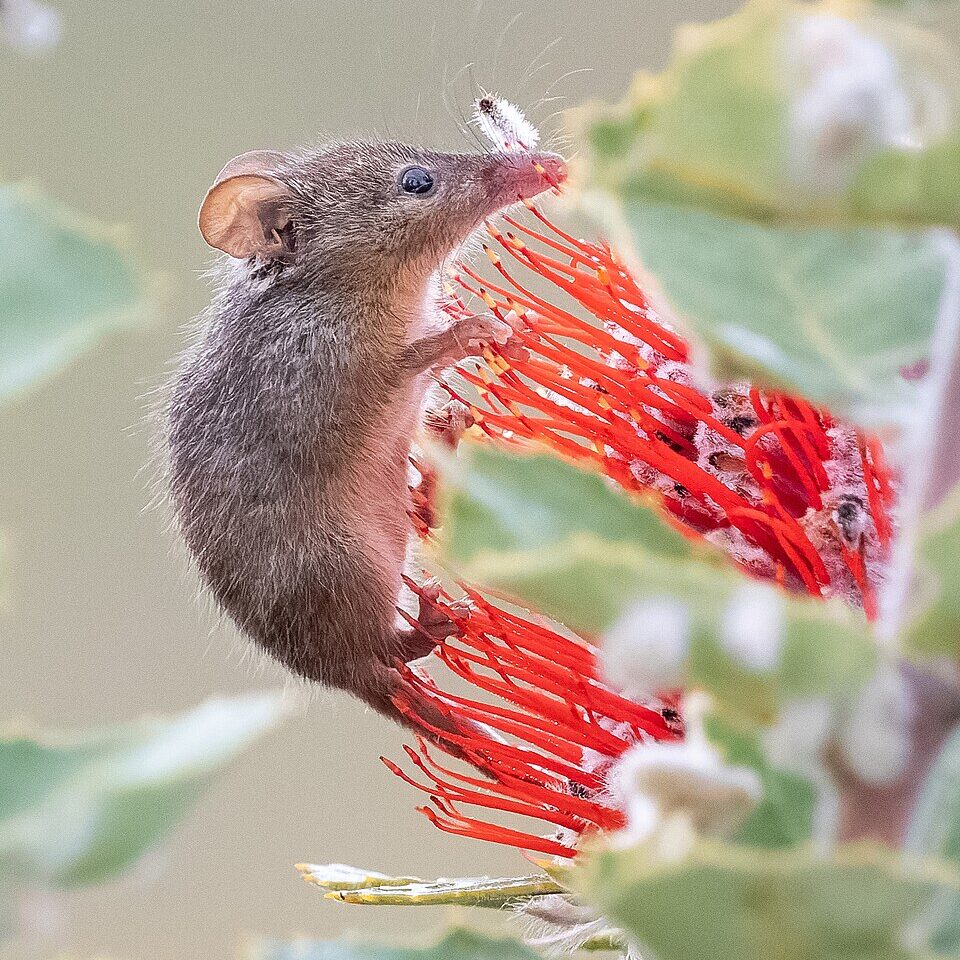
Honey Possum
Overview
The honey possum (Tarsipes rostratus) is a small, nocturnal marsupial native to southwestern Australia. Despite its name, it does not eat honey but feeds almost exclusively on nectar and pollen, making it a highly specialized and important pollinator.
Identification
This tiny creature weighs only 7 to 10 grams and measures about 7 to 9 centimeters in body length. It has a long, pointed snout and a prehensile tail. Its tongue is long and brush-tipped, perfectly adapted for extracting nectar from flowers. The fur is soft and grayish-brown with subtle stripes on the back.
Habitat and Distribution
Honey possums are found only in specific parts of southwestern Western Australia, particularly in areas with high plant diversity such as kwongan heathlands. They require habitats that produce flowers year-round to sustain their constant nectar and pollen diet.
Feeding and Pollination
Unlike most marsupials, honey possums feed solely on floral resources. They are important pollinators of various native plants, including Banksia, Grevillea, and Melaleuca species. As they move from flower to flower, their fur and snouts pick up pollen, which is transferred to other blooms, aiding in fertilization.
Reproduction and Life Cycle
Reproduction can occur year-round when food is abundant. Females give birth to very small young, which develop in a pouch for about two months. Honey possums are unique among marsupials in that males have the largest testes relative to body size of any mammal, an adaptation linked to their highly competitive mating system.
Conservation
While not currently endangered, honey possums are vulnerable to habitat loss, fire, and climate change. Their dependence on specific flowering plants makes them particularly sensitive to environmental changes. Conservation efforts focus on protecting their native heathland ecosystems and ensuring the year-round availability of flowering plants.
